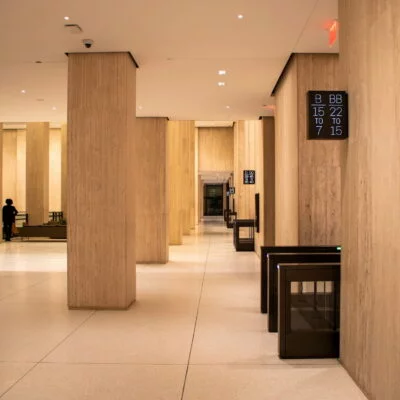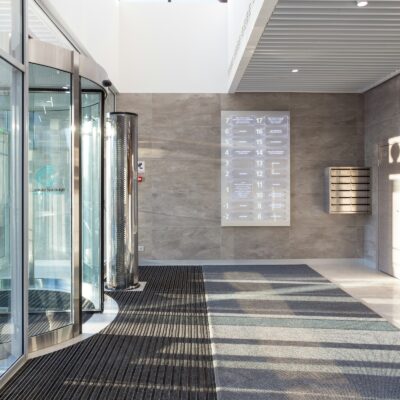- Originally published: February 24, 2025
- Last updated: July 18, 2025
Gone are the days of messy paper sign-in sheets — modern visitor management systems (VMS) can now automate the entire visitor management process, making it faster and more efficient for guests and employees. Whether you’re welcoming a job candidate, supplier, or VIP guest, a good VMS can help build custom check-in experiences and improve visitor flow management as a whole.
This guide will walk you through how a visitor management system works, the best ways to design a visitor management system process, and different visitor management flows you might want to consider.
Building a visitor management process
What is a visitor management process?
A visitor management process is the way businesses keep track of people who enter their building. It helps you make check-ins easy, keeps the workplace secure, and ensures a smooth check-in experience for your guests.
Here’s how it usually works:
- Visitor registration – Guests sign in, either by pre-registering online or checking in at the front desk using a visitor management kiosk, tablet, QR code, or sign-in sheet.
- Identity verification – Depending on security needs, visitors may need to show an ID, take a photo, or have a temporary badge printed.
- Host notification – The system automatically alerts the employee they’re visiting, so the guest doesn’t have to wait around for too long.
- Access control – Some workplaces provide temporary keycards or require an escort to restricted areas.
- Tracking and check-out: Visitor details are logged, and the system records their departure for security and compliance reasons.
A visitor management system (VMS) automates this process, speeding up check-ins, improving security, and maintaining accurate visitor logs.
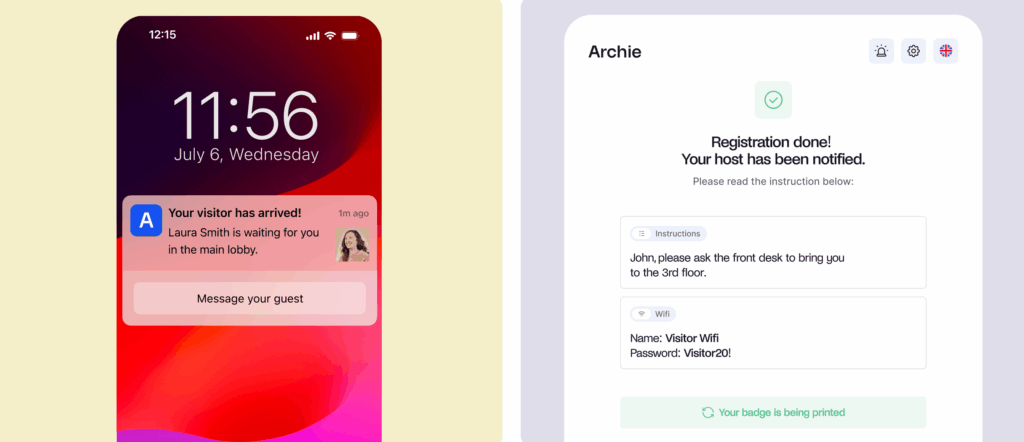
Why use a visitor management system — features and benefits
A visitor management system (VMS) makes it easy to welcome guests while keeping your workplace safe and organized. Instead of using paper sign-in sheets or manually logging visitor details, a VMS automates the entire visitor management process:
- Fast check-in: Guests can sign in using a QR code, mobile app, or touchscreen tablet — there is no need for paper logs.
- Instant host notifications: Hosts get an automatic alert when their visitor arrives.
- Visitor badges: The system prints temporary badges with names and photos for easy identification.
- Digital forms & NDAs: Visitors can sign agreements or safety policies on the spot.
- Third-party integrations: VMS syncs with office tools, security systems, and access control software for improved workplace security.
- Detailed visitor logs: You can keep a record of all check-ins to know who’s in the building at all times.
- Emergency alerts: A VMS can instantly notify visitors and staff in case of an emergency.
- Language support: Visitor management systems support different languages so every visitor has a smooth check-in experience.
- Custom visitor flows: The best visitor management systems let you personalize the check-in experience based on the visitor type.
Looking for the best VMS out there? From the moment a visitor registers to when they leave, Archie ensures everything is quick, easy, and secure. Guests can pre-register online, check in with a QR code, and receive instant notifications when their host is ready. Archie is more than just a visitor management system, though — it’s a complete solution for making workplaces run smoothly.
How does a visitor management system work?
To get started, most visitor management systems need a tablet or touchscreen at the entrance for check-ins, a computer to manage visitor records, and a stable Wi-Fi connection if they are cloud-based.
You can also use:
- Badge printers for temporary visitor badges
- QR code scanners for faster check-ins
- Cameras for ID verification
- Badge readers for access control
- Visitor kiosk stands for self-check-ins
They do come with additional costs, though. No matter which hardware you choose, here’s how a visitor management system works step by step:
#1 Pre-registration
Before a visitor arrives, the system can send them an email invitation with important details, like directions, safety requirements, or a health screening form. This way, guests can pre-register, making the check-in process even faster. However, if someone arrives without an invitation, they can still register on the spot ⤵
#2 Check-in at arrival
When visitors arrive, they check in using a visitor management kiosk or their phone, depending on the hardware. They may need to enter their details, take a quick photo, or sign important documents (like an NDA or safety agreement). If they were pre-registered, they can just scan a QR code for an even faster check-in.
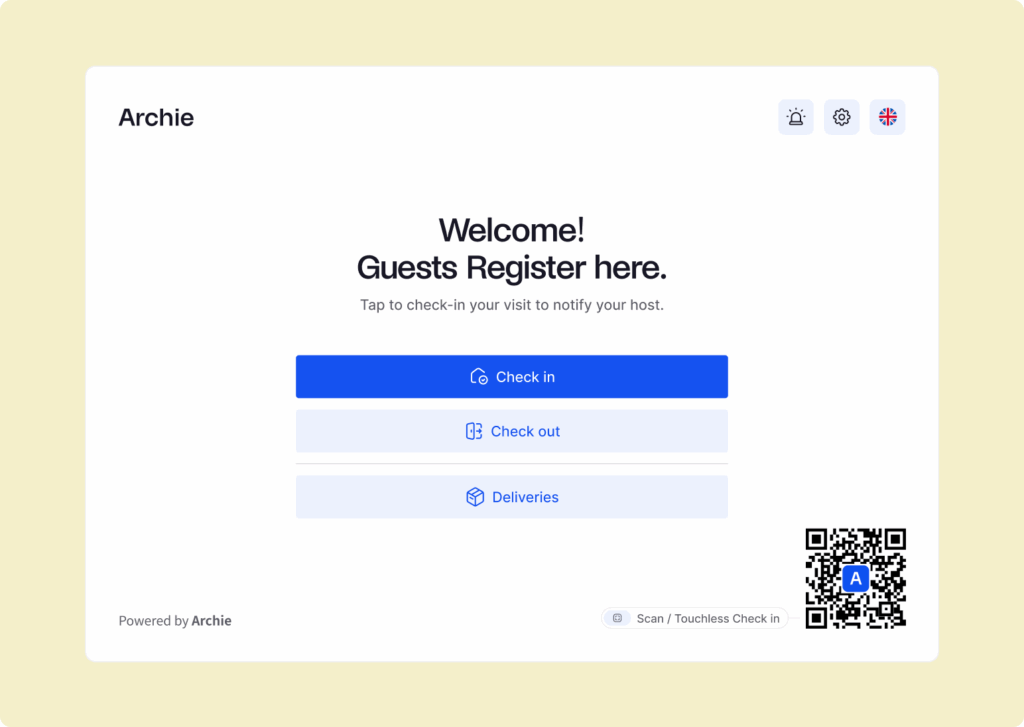
#3 Automated security screening
The system can automatically screen visitors based on the company’s settings. It can check if the visitor is pre-approved, restrict early check-ins, or require them to answer screening questions before they are allowed inside.
#4 Notifying the host
As soon as the visitor checks in, the system sends an instant notification to their host so they know their guest has arrived — there is no waiting around at the reception.
#5 Meeting the guest
Since the host knows exactly who to expect, they can greet the visitor right away.
#6 Keeping visitor records
The system also records all visitor check-ins and check-outs. This helps businesses keep track of who was in the building at any given time, improving workplace security and compliance. The visitor logs can also provide useful insights into visitor trends, helping businesses improve their check-in experience over time.
💡 You can learn more about VMS solutions from our visitor management system PDF guide →
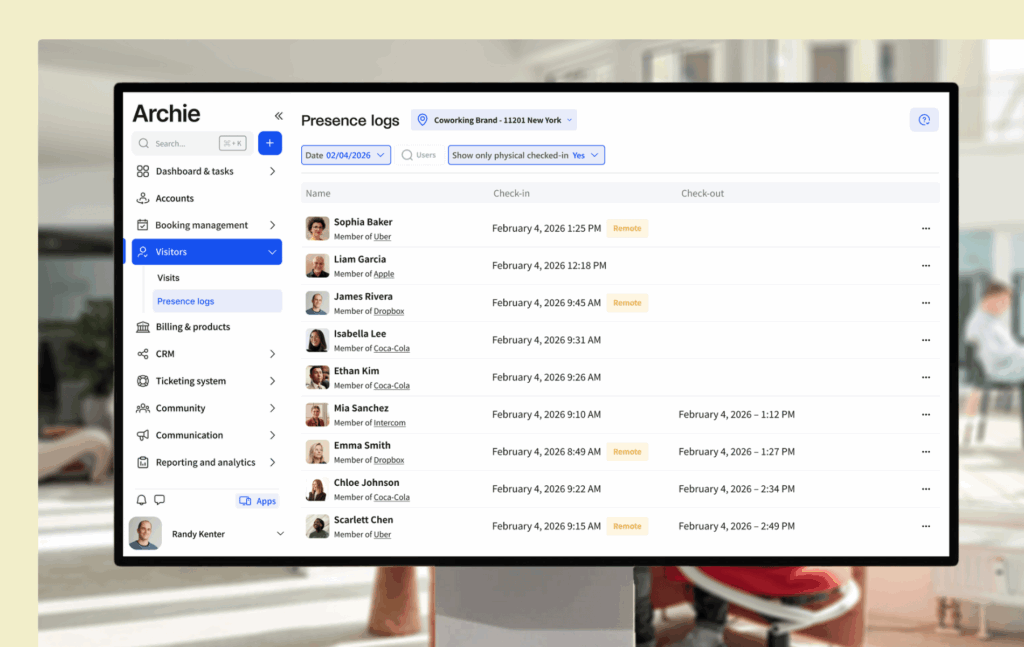
How to create a visitor management system
To build your own visitor management framework, you’re going to need:
- A host — The employee or person the visitor is meeting,
- A receptionist — The person (or a digital kiosk) helping with the check-in process,
- Visitor management software — An advanced system like Archie handles the entire check-in process, and last but not least,
- Visitors!
Identify the types of visitor you expect
Visitor flow management starts with defining different types of visitors, and then deciding how guests will check in, what security measures they need, and whether they should pre-register or sign in on arrival. Think about who typically visits your space:
- Clients or customers
- Job candidates
- Vendors or contractors
- Delivery drivers
- Friends or family members of employees
Map out the full visitor journey
Each type of visitor might need a slightly different check-in experience. But, with the right software, you can automate the entire visitor management system process flow.
Archie allows you to fully customize how visitors check in and move through your space. For example, you can require certain visitors to take a photo, print an ID badge, or fill out a post-visit survey. You can even set up automatic follow-ups, like sending a satisfaction survey after their visit.
Before you start setting it all up, it’s best to map out different events and actions that take place during a visit:
- The host sends an invitation to the visitor before the visit.
- The visitor arrives at reception or a check-in kiosk.
- They check in by entering their details or scanning a QR code.
- ID verification happens if needed.
- The visitor signs any required documents like an NDA or safety form.
- They receive a visitor badge.
- The host is notified that their guest has arrived.
- The visitor meets with the host or attends a meeting.
- After the visit, the visitor checks out and their record is updated.
Mapping this out helps you see where you need technology, what steps need extra security, and where you can make things quicker and easier.
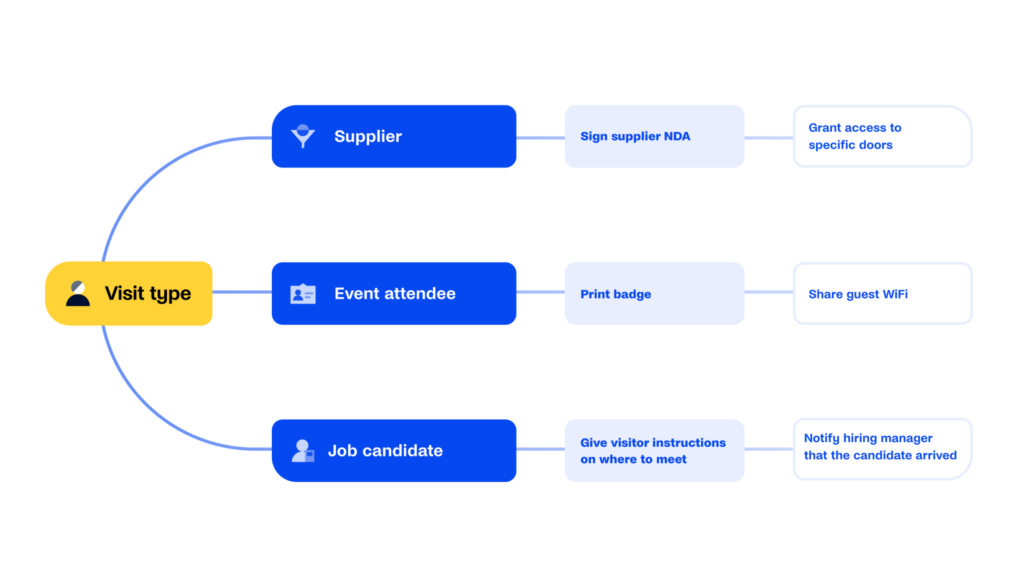
Plan for emergencies
Your visitor management framework also needs to cover what happens in an emergency. A good system should help you:
- Quickly see a real-time list of everyone inside the building (employees and visitors)
- Send emergency alerts via text, email, or app
- Help security and safety teams run quick roll calls during evacuations
Visitors are your responsibility once they’re inside — and having a plan makes a big difference in stressful situations.
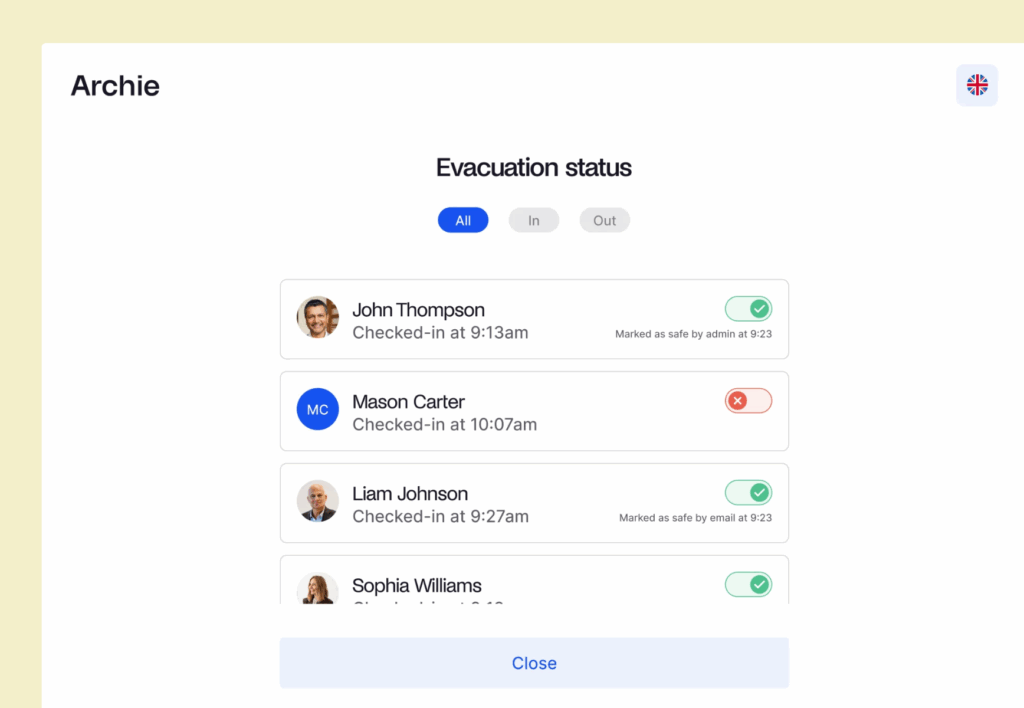
Train your team
A fancy system won’t do much good if no one knows how to use it! First, make sure everyone understands the visitor rules you’ve put in place. This includes:
- What type of identification do visitors need to show (if any)
- Where visitors are allowed to go (and where they’re not)
- Whether visitors need to be escorted around the building
- What screening questions or health checks must visitors complete before entry
These rules should find the right balance between making visitors feel welcome and keeping your workplace safe. Clear guidelines also help your team stay consistent and avoid confusion.
Next, train your team on how to use the visitor management system itself. Everyone, from the front desk staff to security teams to employees hosting visitors, should know:
- How visitors are supposed to check in
- How hosts are notified when their guest arrives
- What to do if something goes wrong or there’s an emergency
Short training sessions, quick-reference guides, and simple videos are all great ways to get everyone comfortable with the process. A little preparation now can save a lot of time (and headaches) later!
Visitor flow management — examples
1. Fully pre-registered visit
For frequent visitors, VIP guests, or scheduled meetings, a pre-registration process makes check-ins quick and easy. Visitors fill out all necessary details in advance, including ID verification, safety agreements, and any required forms. When they arrive, they simply scan a QR code at a self-check-in kiosk or reception desk. Their host is automatically notified, and if needed, a visitor badge is printed. This process minimizes wait times and reduces front desk involvement.
💡 Best for: Corporate offices, coworking spaces, or businesses with frequent external visitors.
📌 Reception involvement: Minimal – the process is almost fully automated.
2. Pre-registered visit with on-site registration
Some workplaces require visitors to pre-register in advance, but additional steps are completed on-site. Visitors may need to confirm their details, take a photo, or sign additional agreements upon arrival. While walk-ins are not accepted, pre-registered guests can finalize their check-in using a tablet or kiosk at the front desk. Once the check-in is complete, the visitor receives an ID badge, and their host is notified.
💡 Best for: Secure offices, research facilities, and organizations with controlled visitor access.
📌 Reception involvement: Moderate – staff may assist with final registration but don’t handle every step.
3. Walk-in visitors
For workplaces that allow unplanned guests, walk-in visitors need to complete their registration upon arrival. They enter their details on a tablet or kiosk and, if required, take a photo and sign any legal forms (NDAs, safety waivers, etc.). Once they check in, their host is notified, and they may need to wait at the reception until someone picks them up. Depending on security policies, they might receive a temporary keycard or need an escort to access certain areas.
💡 Best for: Service centers, event venues, and businesses that allow guest drop-ins.
📌 Reception involvement: High – front desk staff actively assist visitors with check-in and security checks.
4. Contractors & vendors
Workplaces that manage contractors or vendors often have stricter security measures. Visitors may need to upload their certifications or proof of compliance before they arrive. When they check in, they might have to watch a safety briefing video to get access. The system can provide temporary access credentials, like a digital keycard, to allow entry into restricted areas.
💡 Best for: Warehouses, manufacturing plants, and high-security offices.
📌 Reception involvement: Low to moderate – a self-serve kiosk can handle most of the process.
5. High-security visitors
In facilities with strict security protocols, visitors must go through additional screening. They must pre-register and receive manual approval before arrival. They may also need to provide ID verification or undergo a security check before entering. Access is only granted after approval from security or an admin.
💡 Best for: Government buildings, research labs, or businesses with confidential data.
📌 Reception involvement: High – manual approvals and security checks are required.
Not all visitors are the same, so a one-size-fits-all check-in process doesn’t work for every workplace. A good visitor management system like Archie lets you customize the check-in experience based on visitor type, security requirements, and the desired check-in experience.

Berenika Teter
Archie's Content Manager, fueled by filter coffee and a love for remote work. When she’s not writing about coworking spaces and hybrid workplaces, you can probably find her exploring one.
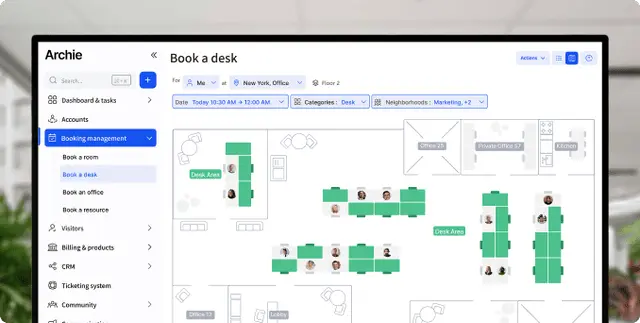
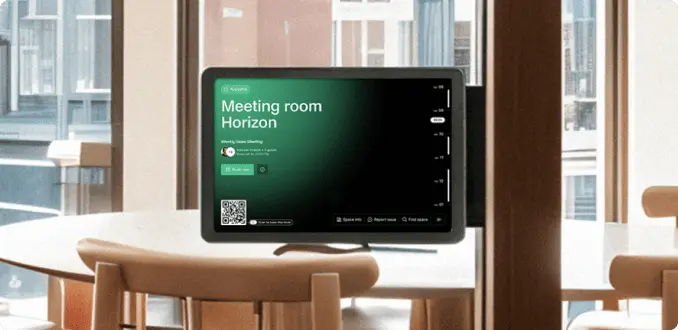
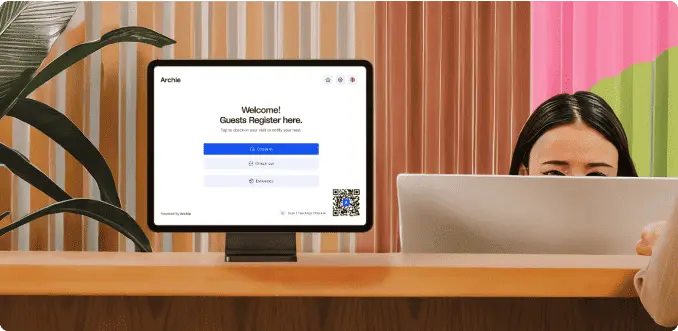
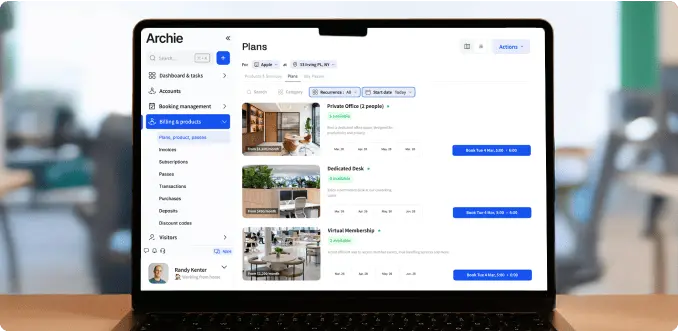
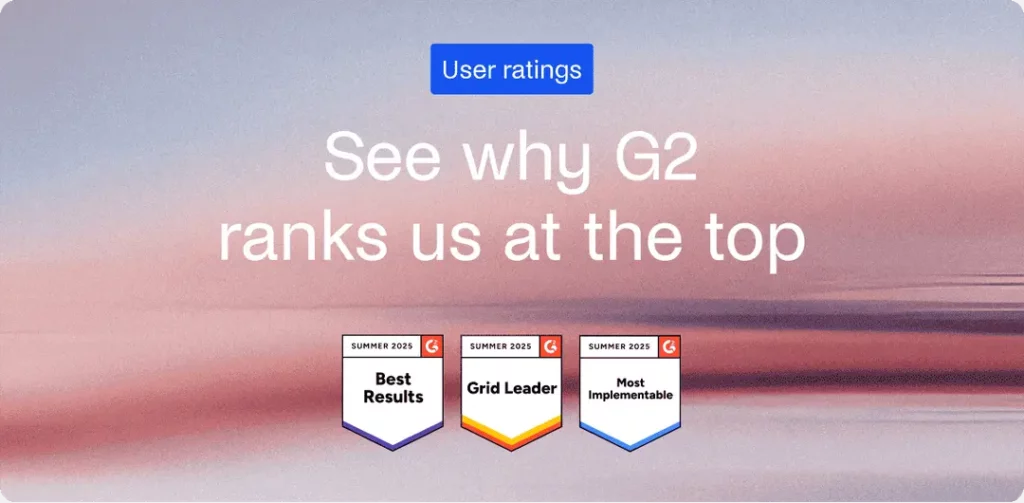
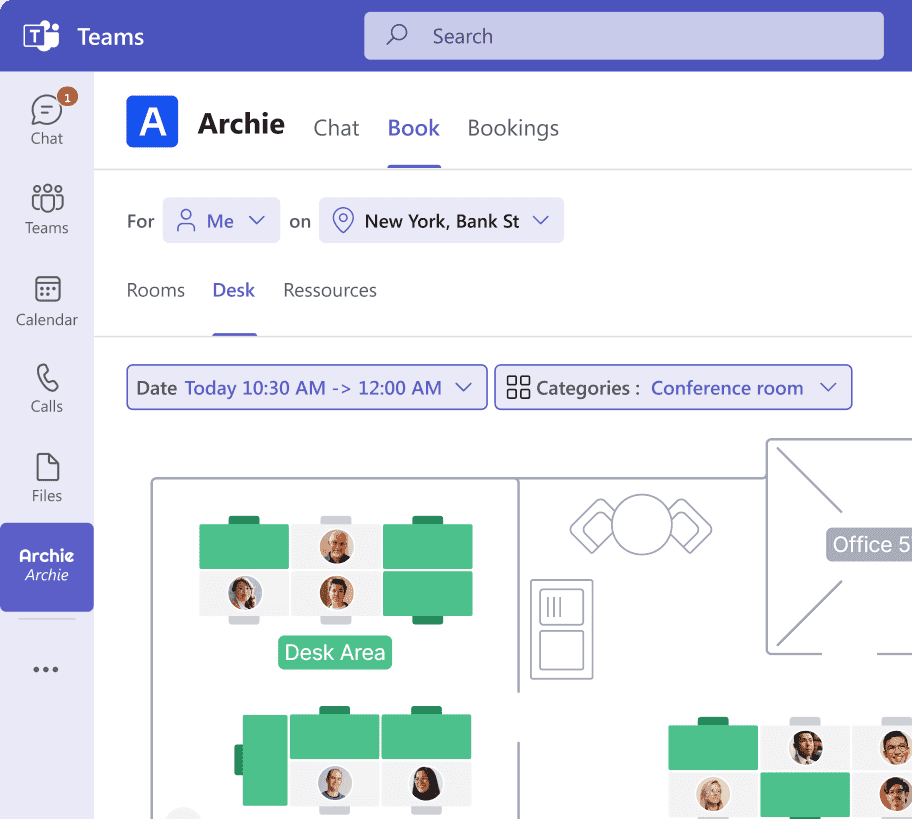
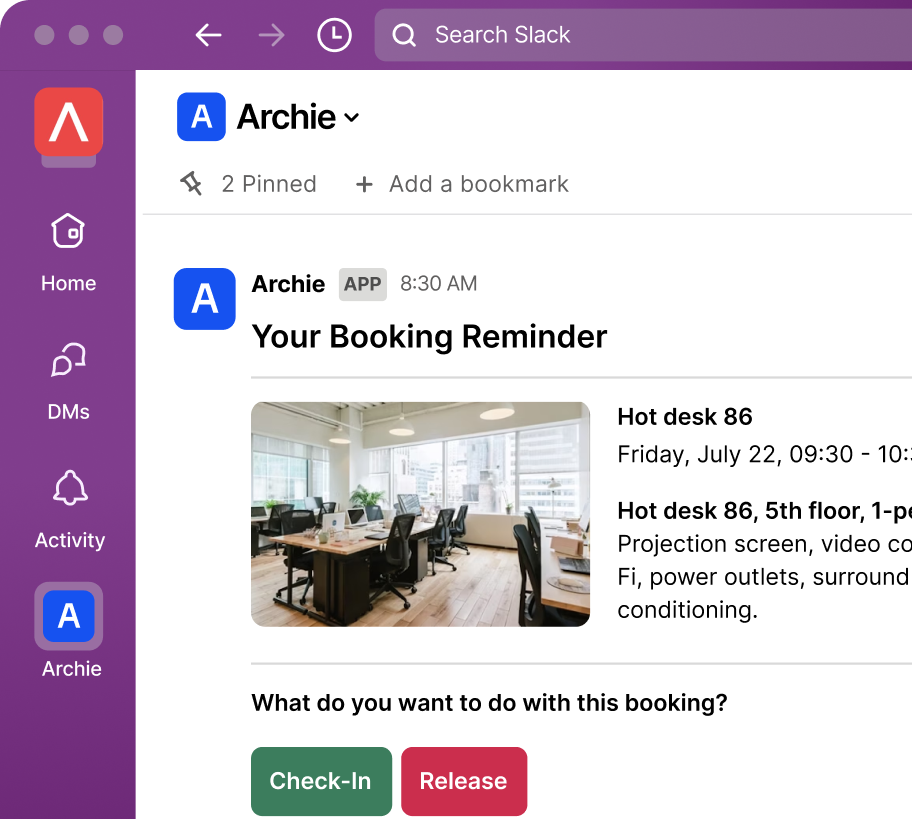
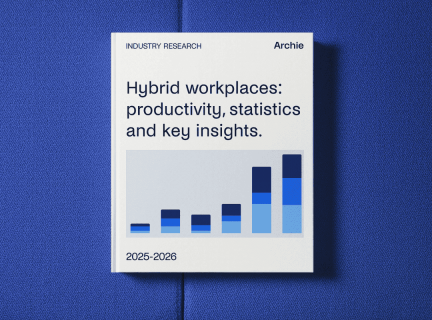

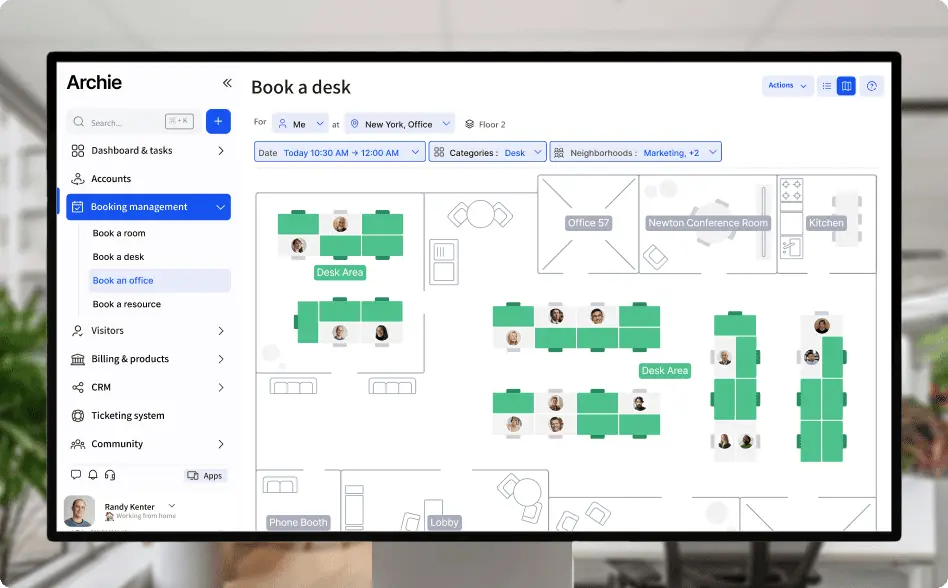
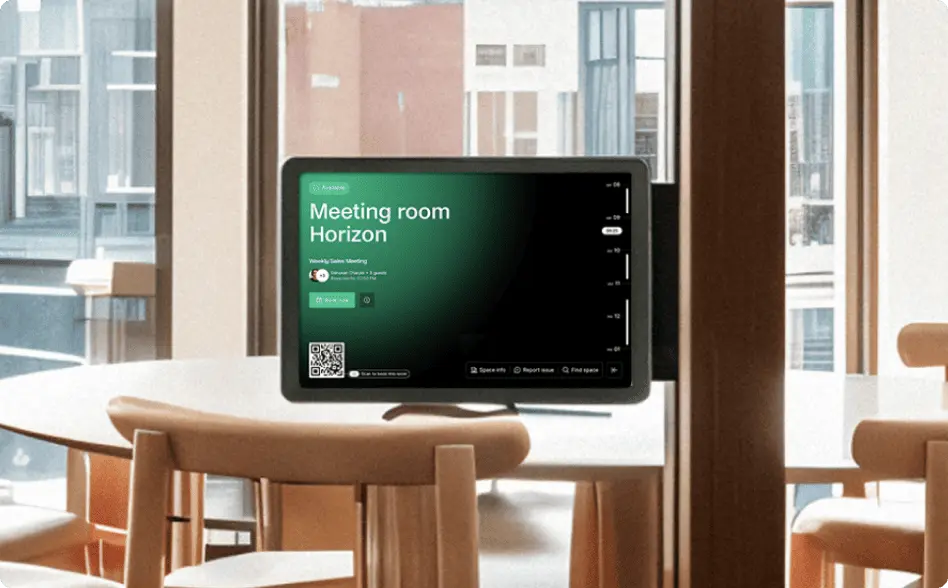
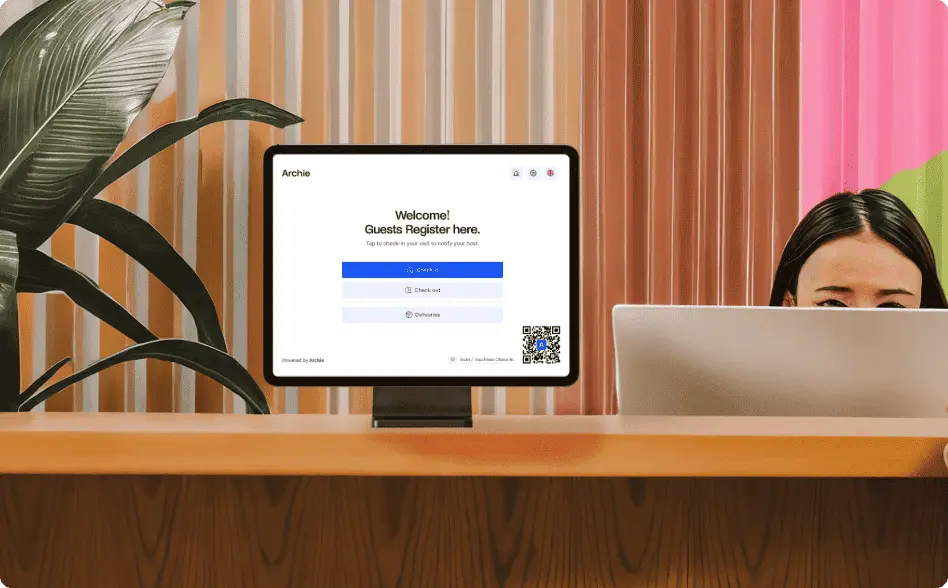
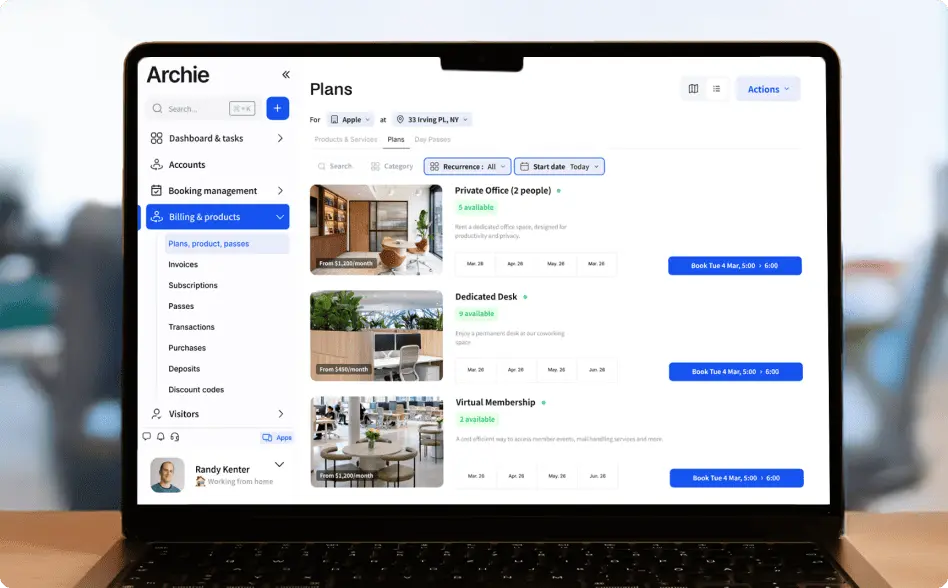


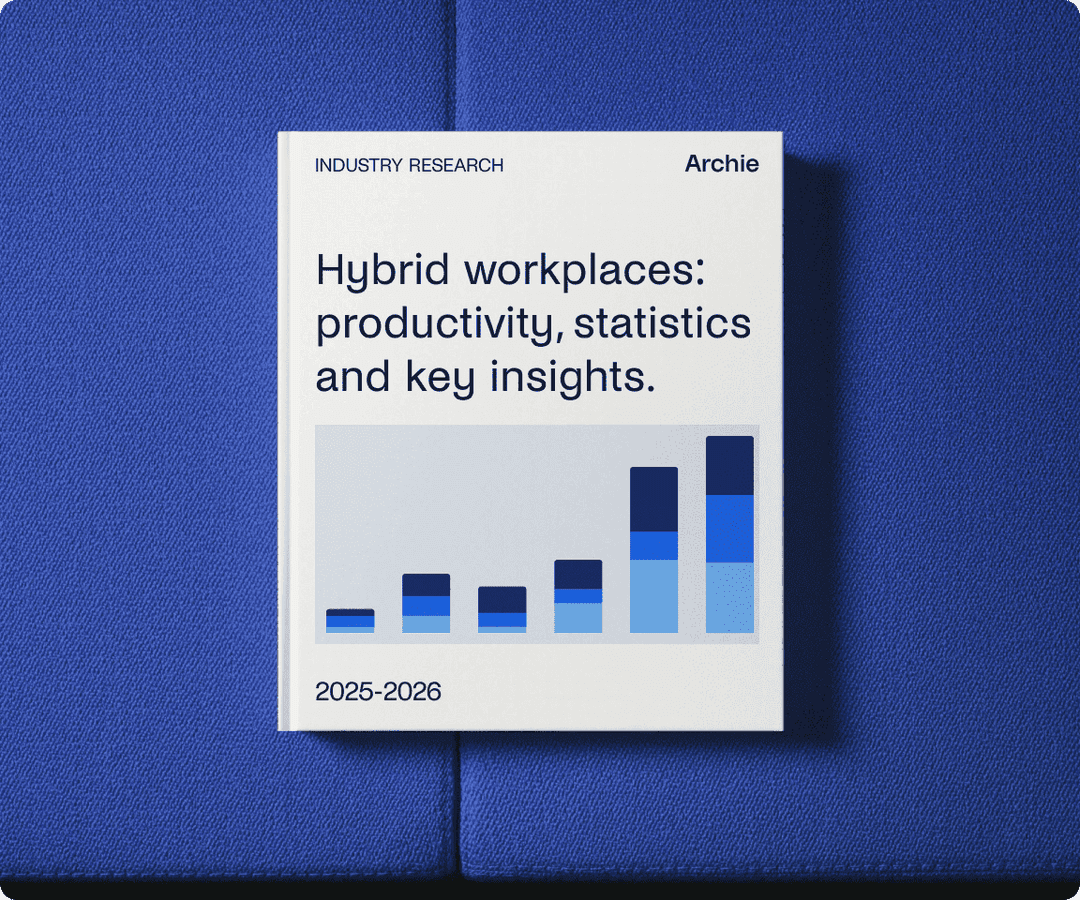

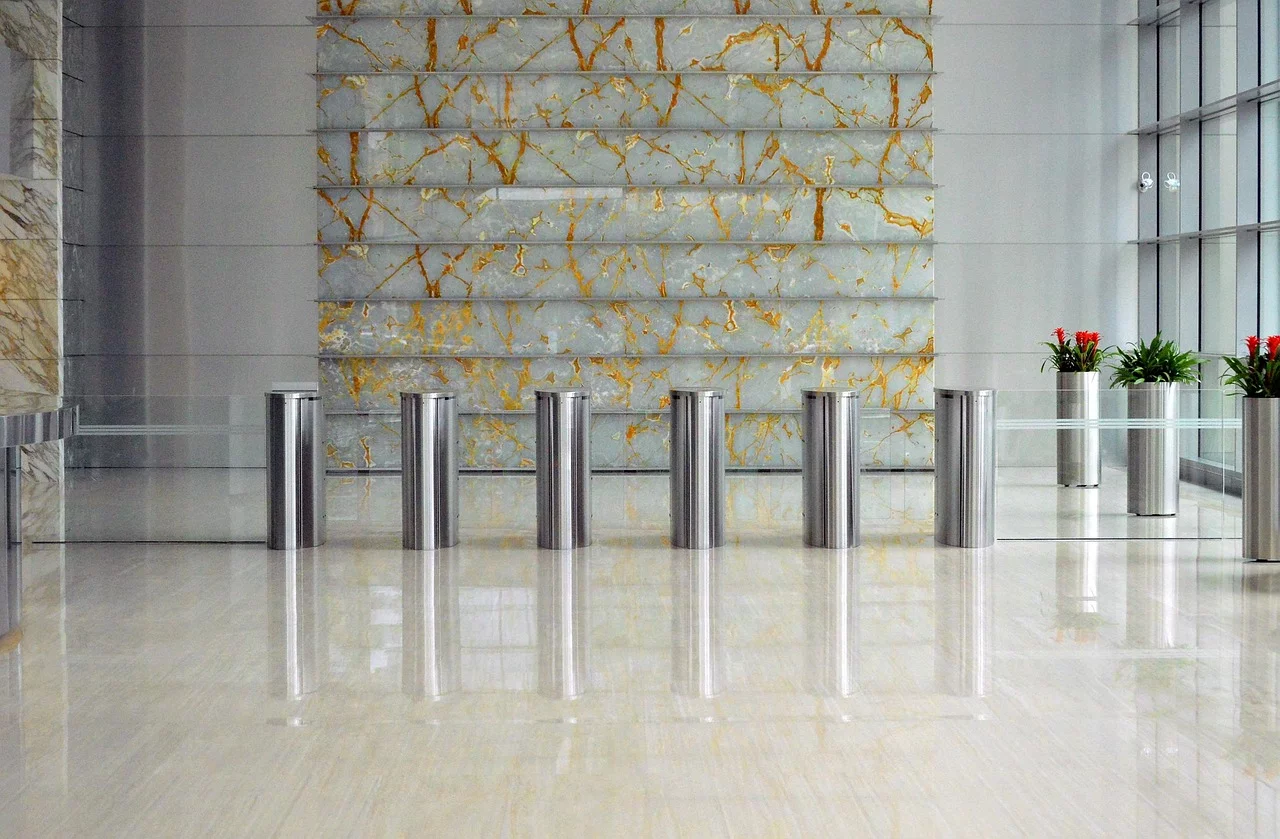
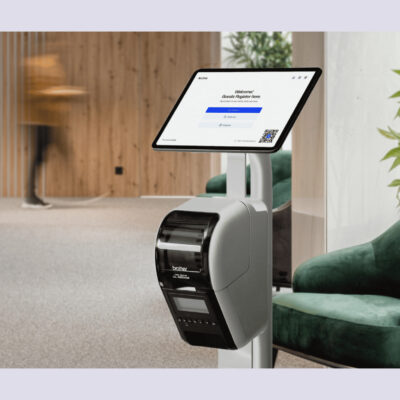
![SwipedOn: Visitor Management App Review [2026 Guide] Interior of a modern building with exposed concrete, brick walls, and a central staircase surrounded by glass doors and classrooms.](https://archieapp.co/blog/wp-content/uploads/2025/11/SwipedOn-visitor-management-app-review-cover-image-400x400.jpg)
